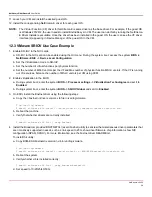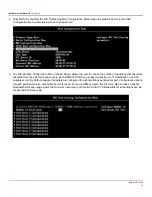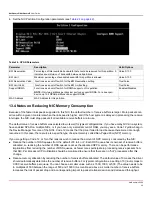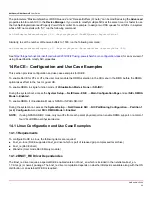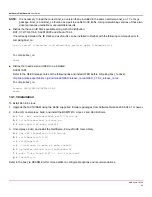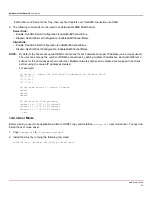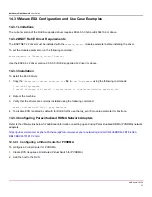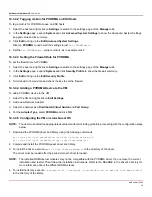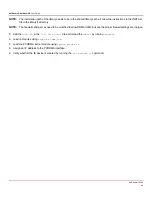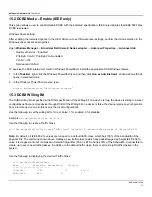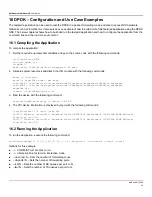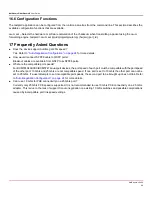
NetXtreme-UG100
52
NetXtreme-C/NetXtreme-E
User Guide
Use the following in modifying the Traffic Class:
PS C:\> Set-NetQoSTrafficClass -Name "SMB class" -BandwidthPercentage 40
PS C:\> get-NetQosTrafficClass
Name Algorithm Bandwidth(%) Priority
------------------------------------------------------------------
[Default] ETS 60 0-3,5-7
SMB class ETS 40 4
Use the following to remove the Traffic Class:
PS C:\> Remove-NetQosTrafficClass -Name "SMB class"
PS C:\> Get-NetQosTrafficClass
Name Algorithm Bandwidth(%) Priority
------------------------------------------------------------------
[Default] ETS 100 0-7
Use the following to create Traffic Class (Strict Priority):
C:\> New-NetQosTrafficClass -name "SMB class" -priority 4 -bandwidthPercentage 30-Algorithm Strict
Enabling PFC:
PS C:\> Enable-NetQosFlowControl -priority 4
PS C:\> Get-NetQosFlowControl -priority 4
Priority Enabled
------------------------------------------------------------------
4 True
PS C:\> Get-NetQosFlowControl
Disabling PFC:
PS C:\> disable-NetQosflowControl -priority 4
PS C:\> get-NetQosFlowControl -priority 4
Priority Enabled
------------------------------------------------------------------
4 False
Use the following to create QoS Policy:
PS C:\> New-NetQosPolicy -Name "SMB policy" -SMB -PriorityValue8021Action 4
Name : SMB policy
Owner : Group Policy (Machine)
NetworkProfile : All
Precedence : 127
NOTE:
The previous command creates a new policy for SMB. SMB is an inbox filter that matches TCP port 445 (reserved
for SMB). If a packet is sent to TCP port 445 it is tagged by the operating system with IEEE 802.1p value of 4 before
the packet is passed to a network miniport driver. In addition to SMB, other default filters include iSCSI (matching
TCP port 3260), NFS (matching TCP port 2049), LiveMigration (matching TCP port 6600), FCOE (matching
EtherType 0x8906) and NetworkDirect. NetworkDirect is an abstract layer created on top of any RDMA
implementation on a network adapter. NetworkDirect must be followed by a Network Direct port. In addition to the
default filters, a user can classify traffic by application’s executable name (as in the first example below), or by IP
address, port, or protocol.

